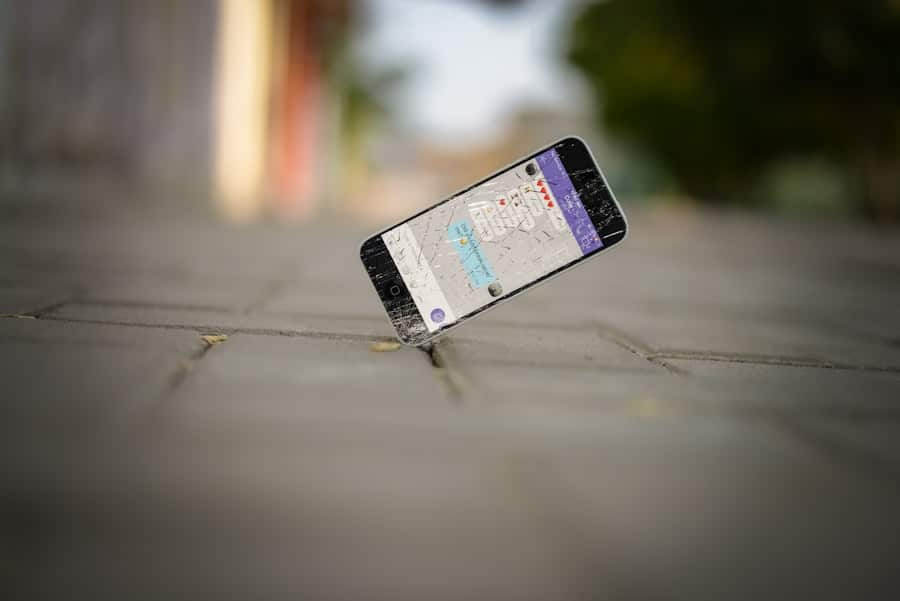In the digital age, the way we access information and learn has undergone a significant transformation. Mobile learning apps have emerged as a powerful tool, enabling learners to engage with educational content anytime and anywhere. These applications leverage the ubiquity of smartphones and tablets, providing users with a flexible and interactive learning experience.
The rise of mobile learning is not merely a trend; it reflects a fundamental shift in educational paradigms, where traditional classroom settings are complemented or even replaced by mobile technology. Mobile learning apps cater to a diverse audience, from school students to professionals seeking to enhance their skills. They encompass a wide range of subjects and formats, including language learning, coding, mathematics, and even soft skills development.
The convenience of having educational resources at one’s fingertips has made mobile learning increasingly popular. As users can learn at their own pace and revisit materials as needed, these apps have the potential to foster deeper understanding and retention of knowledge.
Key Takeaways
- Mobile learning apps provide convenient access to educational resources on-the-go
- Benefits of mobile learning apps include flexibility, personalized learning, and interactive content
- Mobile learning apps can improve study habits by promoting self-paced learning and providing access to a variety of study materials
- Popular mobile learning apps include Duolingo, Khan Academy, and Quizlet
- Tips for effective use of mobile learning apps include setting specific goals, minimizing distractions, and utilizing interactive features for better engagement
Benefits of Mobile Learning Apps
One of the most significant advantages of mobile learning apps is their accessibility. With the proliferation of smartphones, learners can access educational content without being tethered to a physical location or specific time. This flexibility allows individuals to integrate learning into their daily routines, whether during commutes, breaks at work, or while waiting in line.
The ability to learn on-the-go empowers users to take control of their education, making it more personalized and tailored to their unique schedules. Moreover, mobile learning apps often incorporate interactive elements that enhance engagement. Features such as quizzes, gamification, and multimedia content can make learning more enjoyable and effective.
For instance, language learning apps like Duolingo use game-like mechanics to motivate users, turning what could be a tedious process into an engaging experience. This interactivity not only helps maintain user interest but also reinforces concepts through active participation, leading to better retention of information.
Impact on Study Habits

The integration of mobile learning apps into study routines has significantly altered how individuals approach their education. Traditional study habits often involved lengthy sessions of reading textbooks or attending lectures; however, mobile apps encourage shorter, more focused bursts of learning. This shift aligns with the concept of microlearning, where information is broken down into bite-sized chunks that are easier to digest.
As a result, learners can absorb material more effectively without feeling overwhelmed. Additionally, mobile learning apps promote self-directed learning. Users can choose what they want to study and when, fostering a sense of autonomy that can lead to increased motivation.
This empowerment is particularly beneficial for adult learners who may be balancing education with work and family responsibilities. By allowing learners to set their own goals and track their progress, mobile apps can instill a sense of accomplishment that further encourages continued engagement with educational content.
Popular Mobile Learning Apps
Several mobile learning apps have gained widespread recognition for their effectiveness and user-friendly interfaces. One notable example is Khan Academy, which offers a vast library of instructional videos and practice exercises across various subjects, including math, science, and humanities. The app’s structured approach allows users to follow a personalized learning path, making it suitable for learners of all ages.
Another popular app is Coursera, which partners with universities and organizations to provide online courses on a wide range of topics.
The app’s flexibility makes it an attractive option for professionals looking to upskill or pivot in their careers.
Similarly, platforms like Udemy offer a marketplace for instructors to create and sell courses on diverse subjects, further expanding the options available to learners.
Tips for Effective Use of Mobile Learning Apps
To maximize the benefits of mobile learning apps, users should adopt specific strategies that enhance their learning experience. First and foremost, setting clear goals is essential. By defining what they want to achieve—whether mastering a new language or understanding a complex mathematical concept—learners can focus their efforts and track their progress more effectively.
Additionally, creating a dedicated study environment can help minimize distractions while using mobile apps. Although the convenience of mobile learning allows for studying in various settings, finding a quiet space can enhance concentration and retention. Users should also take advantage of the interactive features offered by many apps, such as quizzes and discussion forums, to reinforce their understanding and engage with other learners.
Challenges and Limitations of Mobile Learning Apps

Despite the numerous advantages of mobile learning apps, they are not without challenges and limitations. One significant concern is the potential for distractions inherent in mobile devices. Notifications from social media or other applications can interrupt the learning process, leading to decreased focus and productivity.
Users must cultivate discipline and find ways to minimize these distractions while studying. Another limitation is the variability in content quality across different apps. While some applications are developed by reputable organizations or educators, others may lack rigorous academic standards or provide outdated information.
Learners should exercise caution when selecting apps and consider user reviews or recommendations from trusted sources to ensure they are accessing high-quality educational materials.
Future Trends in Mobile Learning Apps
As technology continues to evolve, so too will mobile learning apps. One emerging trend is the integration of artificial intelligence (AI) into educational applications. AI can personalize the learning experience by analyzing user behavior and adapting content accordingly.
For instance, an app could identify areas where a learner struggles and provide targeted exercises to address those weaknesses. Additionally, augmented reality (AR) and virtual reality (VR) are poised to revolutionize mobile learning by offering immersive experiences that enhance understanding. For example, medical students could use AR apps to visualize complex anatomical structures in 3D, while language learners might engage in virtual conversations with native speakers in realistic settings.
These advancements promise to make mobile learning even more engaging and effective.
Conclusion and Summary
Mobile learning apps represent a significant advancement in educational technology, offering unprecedented access to knowledge and resources for learners worldwide. Their benefits include flexibility, interactivity, and the ability to foster self-directed study habits that cater to individual needs. While challenges such as distractions and content variability exist, the potential for future innovations—such as AI-driven personalization and immersive technologies—suggests that mobile learning will continue to evolve and expand its impact on education.
By embracing these tools thoughtfully and strategically, learners can harness their full potential to achieve their educational goals.
Mobile learning apps have significantly transformed the way students approach their studies, offering flexibility and personalized learning experiences. These apps enable learners to access educational content anytime and anywhere, making it easier to integrate study sessions into their daily routines. For those interested in exploring the broader impact of technology on education and everyday life, an article titled “What is the Best Tablet to Buy for Everyday Use?” provides insights into selecting the right device to enhance your mobile learning experience. You can read more about it by visiting this link.
FAQs
What are mobile learning apps?
Mobile learning apps are applications designed to deliver educational content and facilitate learning through mobile devices such as smartphones and tablets. These apps cover a wide range of subjects and are often used as supplemental tools for traditional classroom learning.
How are mobile learning apps changing study habits?
Mobile learning apps are changing study habits by providing convenient access to educational materials anytime and anywhere. Students can now study on the go, during their commute, or in between classes, making learning more flexible and adaptable to their schedules.
What are the benefits of using mobile learning apps?
Some benefits of using mobile learning apps include personalized learning experiences, interactive and engaging content, access to a wide range of educational resources, and the ability to track progress and performance. These apps also promote self-directed learning and can cater to different learning styles.
Are there any drawbacks to using mobile learning apps?
Some potential drawbacks of using mobile learning apps include the risk of distraction, over-reliance on technology, and the potential for limited interaction with instructors and peers. Additionally, not all educational materials may be suitable for mobile consumption, and some students may struggle with self-discipline when using these apps.
How can educators leverage mobile learning apps in the classroom?
Educators can leverage mobile learning apps in the classroom by incorporating them into lesson plans, assigning specific app-based activities, and using them to supplement traditional teaching methods. These apps can also be used to facilitate collaborative learning and provide additional resources for students.

